An Orisha is a God or a Goddess from the Yoruba Religion and Mythology. Essentially, Orishas represent the powers of nature, as well as time, life, death, and rebirth.
On this page, I’ll present you all you need to know about Orishas and how to understand them in and out from their original context – the Yoruba Religion.
Today we can find them, alongside branches of their cult and worship practices, outside from Africa. Many countries in the Americas feature the Orishas in their religions. We also have lots of syncretism involved which contributed to the spread of their worship inside Christian beliefs too.
I write this page as a way to honor these forces. Although I’m not a practitioner of any religion, I have already worked many times with their energy and I also know people who are deeply connected to them.
This is going to be a journey. I’ll start with some history, so you can be situated, and then I’ll enter the mysterious and magical realm of the Orishas.
Are you ready?
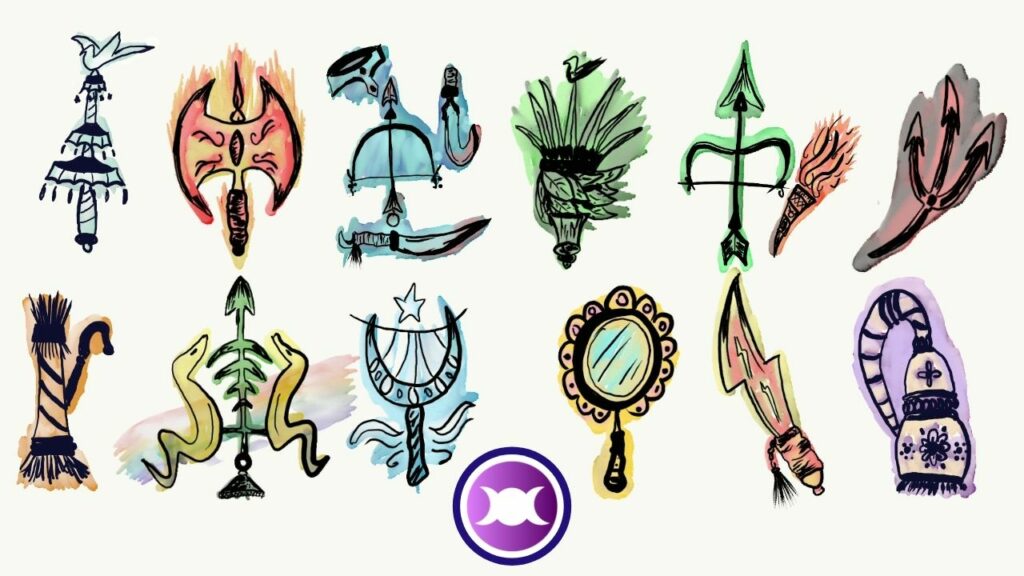
Yoruba Religion and Mythology – an introduction
Before we can get to know each Orisha and their energies, we must understand their roots in the Yoruba Religion and Mythology. To start, Yoruba is a name that encompasses a group of people who live in the region of Nigeria, Benin, and Togo in West Africa. Their tales and beliefs are as old as time, predating our common era.
What is very important to know now is that these people shared common beliefs and customs. In this region, the powerful Oyo Empire flourished. This empire has mythical origins related to the last prince of the Ifé kingdom.
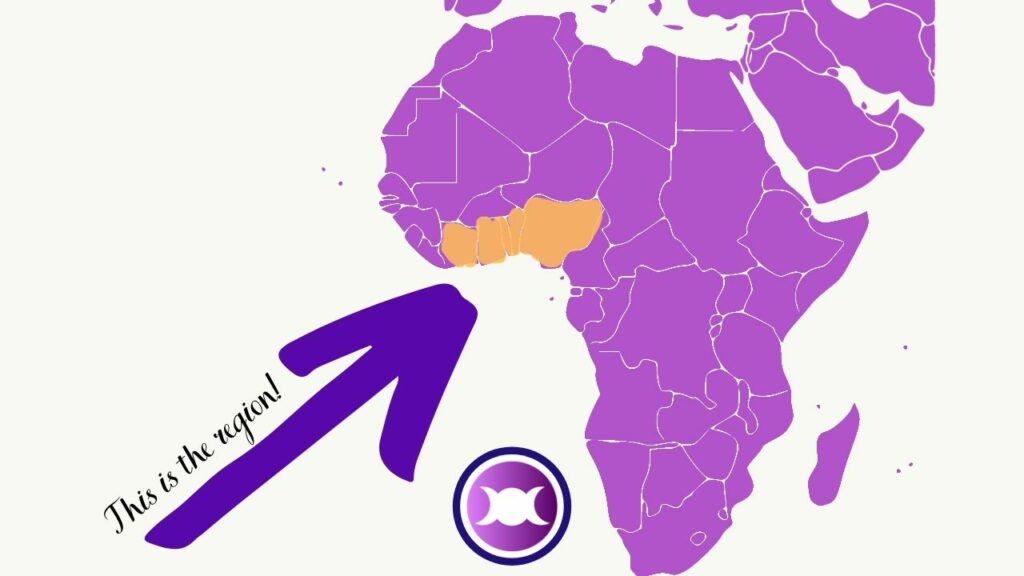
This Ifé kingdom is utterly important for us here. Ifé means something like “the large abode” and it was the first land created by Obatala, the Creator Orisha.
Historically, Ifé (aka Ile-Ife) showed advanced urbanism and is one of the most urbanized centers of ancient Africa. Today, we refer to these areas as Yorubaland. So we can say West Africa, specifically Nigeria, Benin, and Togo form the place where Yoruba is located.
Their religion is mostly made of customs, practices, and beliefs that are orally passed through generations. Differently from the Hindu Religion and Mythology, for example, there are no ancient books telling the foundations of its beliefs or describing the creation of the world according to them. Everything consists of songs, stories, and practices.
Afro-descendant religions in modern day
As I mentioned above, Orishas are worshiped not only in their cradle but also in many other countries around the world. Among these religions we can highlight three, which are the biggest ones:
- Santeria (mainly in Cuba);
- Umbanda (Brazil);
- Candomblé (Brazil).
These religions differ from each other, but their beliefs comprise the Orisha energy and presence.
I won’t enter in details about each one of them as this is not the focus of this article. If you’re interested in the religions themselves, I suggest reading the following articles:
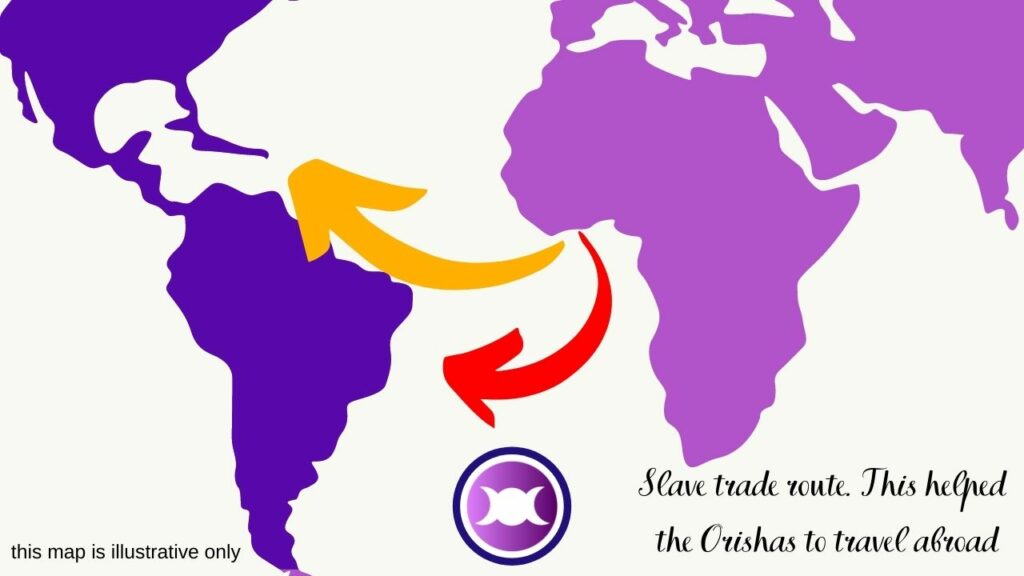
Though differences will always occur, all the 12 main Orishas I’ll present here are mainly worshiped in Umbanda and Candomblé. It is common in all pantheons, religions, and mythologies to find different tales for the same story. Yoruba is no different.
I write this because I was already literally attacked on Twitter because of these differences. So if you find here something different from what you were taught as a practitioner, simply write me, so I can add a note stating this difference.
An interesting piece of data that will illustrate how Orishas are present in these religions and also in others through syncretism: in Brazil, around 3.2% of the population follow the so-called “other religions”. Umbanda, Candomblé, Islam, Buddhism, and others belong to this group. The rest of the population follows Catholicism, Protestantism, Spiritism, or no religion at all.
Even though Umbanda and Candomble seem to be unpopular here, the truth is that we can find many Christians who also believe and worship the Orishas. They may not participate in all the customs, but they do know and praise these Gods too.
Apart from these religions, it’s totally common to find witches and Pagans energetically working with these deities too. The female Orishas, Yemaya, Nanã Buruku, and Oshun, are commonly associated with the Divine Feminine and can be considered different aspects of the Triple Goddess.
Yoruba spells, divination, and rituals
One thing that is common among all religions derived from the Yoruba one is the presence of spells, divination methods, and rituals.
From simple spells such as offering food to an Orisha (this food is commonly called as “ebó”) to complex rituals like isolating a person during some days so they can be “reborn” as the son/daughter of an Orisha, we find a variety of customs that can naturally be adopted by modern witchcraft practitioners too.
A common divination tool is called “búzios” (In English it is called Cowrie Shells reading) which consists of 16 shells that are thrown on a prepared surface. The person salutes the Orishas and talks to them during the session. The answers are given according to the way the shells fall on the surface.
It somehow reminds the method of divination with Runes by the Norse people.
Both in Umbanda and Candomblé, as well as in other religions derived from the Yoruba, it’s common to call spells and magical works “macumba”. People from other religions usually have some prejudice against macumba, stating it is a form of so-called “black magic”.
The truth is that macumba is a collection of rites and spells that may be performed to attract, banish, bind or release energies, spirits, material goods, and whatever the practitioner desires. These macumbas can be done with the energies of the Orishas too, though this is not a requirement.
The creation of the world according to the yoruba
Creation stories are found throughout the world. Interestingly, most of them share things in common in one way or another. I’ll briefly write about the creation of the world according to the Yoruba so we can be more prepared to get to know the 12 main Orishas. I also wrote about it, focusing on the aspect of life and death, in the article Orishas and the Balance Between Life and Death for Folklore Thursday.
Basically, in the beginning, there was only water. But not a river or an ocean. Simply water. No life existed in this water, though. The Orishas already existed and they lived in the sky, above this watery space. Sometimes these Orishas would go down from the sky using spiderwebs to play in the water.
After playtime, they would simply return to the sky.
One day, Olorun, the supreme creator, thought about creating firm land. The idea was to create a space where all of them could go not only to play but also to walk and do other things. He talked to Obatala and assigned him the task of creating land.
To perform it, Obatala was given a shell full of earth, a five-fingered hen, and a pigeon.
Obatala descended from the sky and flipped the seashell on the water. The earth which was inside the seashell fell on it and covered a small space. Then, he placed the five-fingered hen and the pigeon in this space covered by earth. The two animals started to spread the earth, covering a large area.
After some time, the land was firm enough for the Orishas to walk on it. This land received the name Ifé (large abode). The next step was the creation of all life. Obatala created trees, animals, and many other things.
After trials and errors, he finally managed to create human beings who populated the land and worshiped the Orishas as their creators and natural sources of power.
The 12 main Orishas: Gods and Goddesses from Yoruba mythology
Now that you have a background, we can go on. From now on, I’ll bring the Orisha list with the 12 most important ones. It’s said there are over 400 different Orishas out there!
I’ll start with the male ones, the Orisha Gods as we can call them. And then I’ll follow with the female ones, the Orisha Goddesses.
Let’s start?
This is the list of orisha you’ll find more information below:
Orisha Obatala
Orisha Obatala is also known as Oshala, Orishanla, and Oshalufã.
Obatala created the world, all the living things, and human beings. He can be represented as an old man or as a young one. In any form, he’s a wise one.
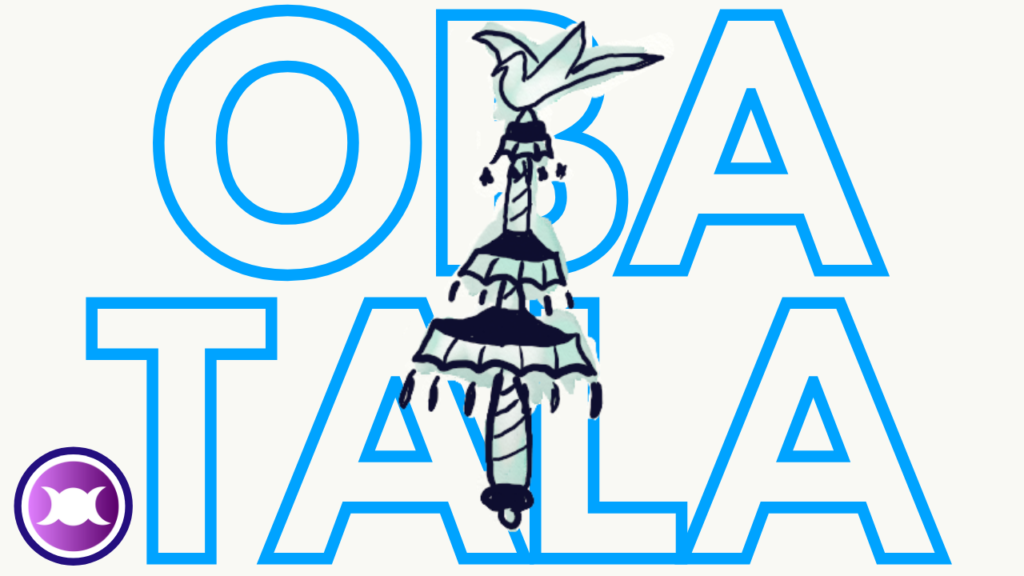
He has many different stories regarding his deeds and adventures, but I’ll briefly write about one of my favorite stories involving him.
One day, Obatala and Eshu argued about who was the oldest Orisha of all. From this argument, a fight started.
Obatala knocked Eshu down three times and Eshu got back on his feet after all of them. This fight was mainly a physical fight, no magic was involved.
People who were watching suggested Eshu could make use of his magical power to beat Obatala. Eshu did it. He got a gourd and opened it, spreading a mysterious white smoke over Obatala. When the smoke disappeared, Obatala noticed his skin color also disappeared. Obatala became albine.
Both continued fighting and Obatala eventually won it. As a prize, he took Eshu’s gourd for him.
Now, it’s said that albino people are highly protected by Obatala.
Orisha Obatala always wears white clothes. His element is wind.
He is balanced and usually tolerant.
Orisha Shango
Orisha Shango is a warrior who’s always ready to fight and protect those who need it. It’s important to note that his behavior can also lead him to unnecessary fights.
He rules over the fire element, but he’s also related to storms and thunderbolts, like his wife Iansã (Oya). It is said he punishes all those who lie and deceive others.
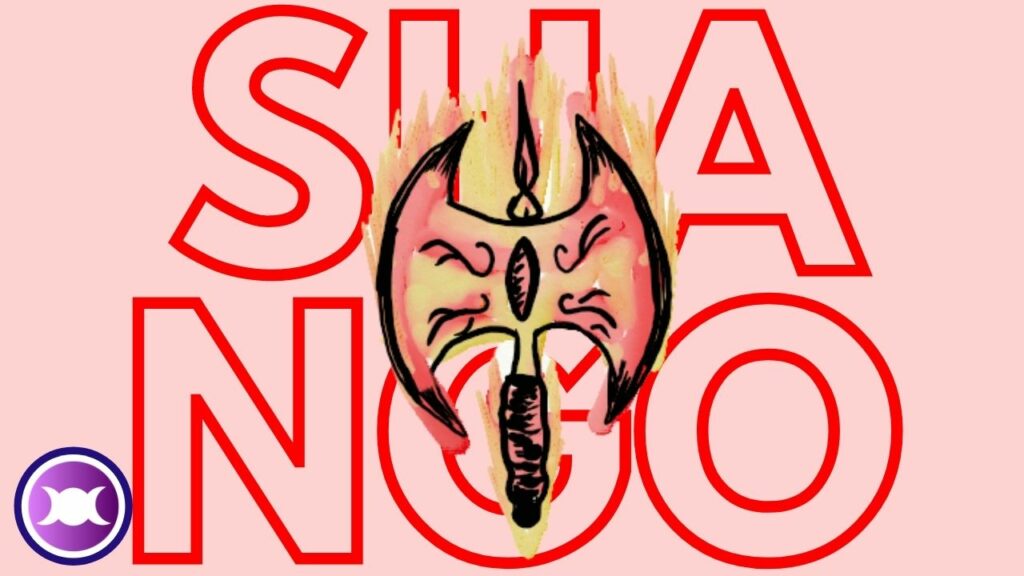
It is said he was the emperor of Oyo, today Nigeria. Once, he wanted to enhance his powers in an absurd way. He ordered all the sorcerers of the empire to produce some kind of magical potion for him, but all of them failed.
Shango called Eshu, then. Eshu accepted the task and said he would produce a kind of medicine capable of granting Shango’s wishes.
Seven days after, Shango’s wife Oya (Iansã) traveled to Eshu’s house to get the medicine. It was a strange red powder. Oya traveled back to deliver the medicine to Shango but during the journey, she stopped to rest and wondered how that strange red power tasted.
She tried a bit. There was no taste at all.
Back to Oyo, Oya delivered Shango the red powder. Shango asked her if Eshu gave instructions on how to use that powder. When she started to speak, fire came out of her mouth. Shango noticed she had taken the medicine and he got mad at her.
He tried to punish her, but she fled. She hid among rams. Shango threw thunderbolts in all directions, killing the rams. Oya hid below the dead rams and managed to escape Shango’s wrath.
Shango returned home. People asked him to calm down and forgive Oya. He calmed down and Oya went back home.
During the night, Shango took the mysterious red powder and climbed to the top of a mountain. He could see the entire empire from there.
Up there, he put the red powder in his tongue and started spitting fire. So he tried a bit more. And he spat more fire. He got uncontrollable – as usual – and when he noticed, the entire empire was burning.
All was lost. All had to be rebuilt again.
Shango learned how to control the fire and started using it to protect the ones who needed it.
Orisha Sango wears red clothes and carries two double axes in his hands.
By symbolically placing these two double axes on the chest, one can summon Shango for protection.
He is impulsive and violent, but fair.
Orisha Ogun
Orisha Ogun is the blacksmith, the one who creates weapons for the other Orishas. He’s also the one who’s responsible for work in general. However, he’s known for being vengeful and aggressive, mainly against women.
Ogun created many things that helped mankind to flourish. He also taught humans agriculture. Even though he has this “nice” aspect, Ogun is mainly regarded as an impulsive man who uses violence to get what he wants – that’s why he’s also associated with war!
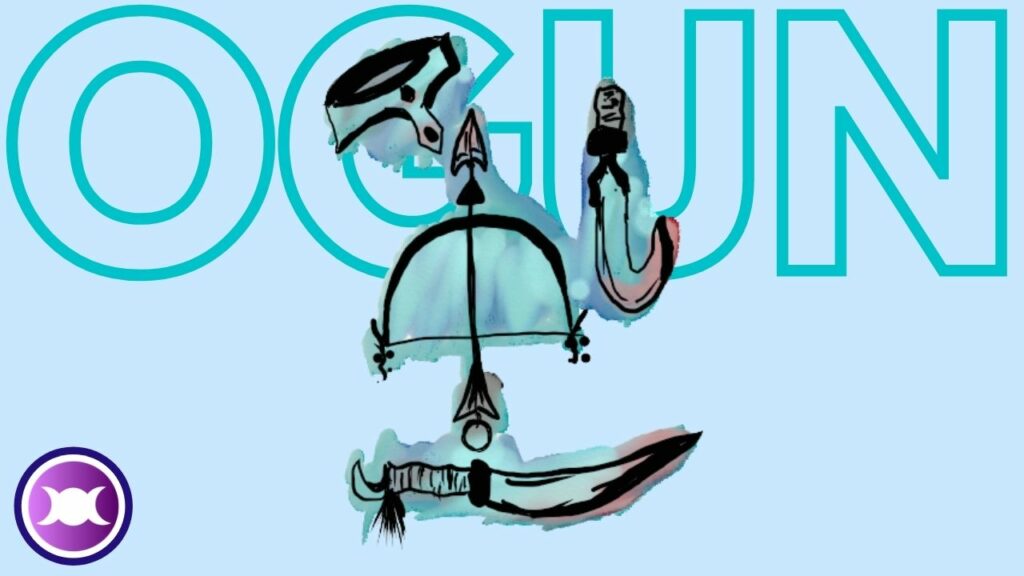
It is said that Ogun had many lovers. While some really wanted to be with him, others were only victims of his desires. He lived inside a forest and he would have sexual relations with any woman who entered the woods.
Other stories tell that Ogum was married to Oya. One day, Shango – Ogun’s brother – wanted to have Oya as a wife. Some say Shango had 3 wives. To get Oya, Shango entered a battle against Ogun.
Ogun, as a blacksmith and Orisha of wars, went well prepared for the fight. He wore metal armor and he had weapons in his hands. Shango, the impulsive, only had a stone.
The battle started and Shango emerged victorious, against all odds. He threw his stone on Ogun and Ogun’s body went ablaze. The stone was actually a “thunderstone” known as “edum ará”.
Oya married Shango and lived with him in his palace in Oyo.
Ogun always wears dark blue clothes and may also wear pieces of armor. He’s followed by dogs.
He rules over the earth element.
Orisha Ochosi
Orisha Ochosi, also known as Oxossi or Odé, is the hunter. He’s the one who provides food and protection for all people. Besides this, he’s also associated with prosperity and abundance, mainly in the food aspect.
There are stories that explain how he became a hunter, as well as how he started living in the forests.
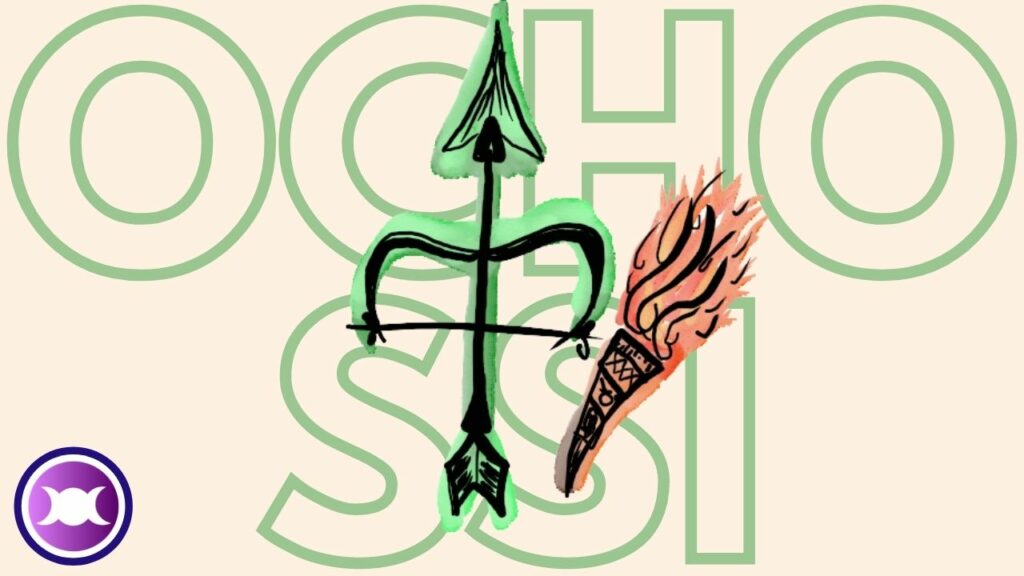
Ochossi and Ogun are brothers. Ogun, as I explained above, is a warrior and he creates weapons. One day, Ogun arrives from a battle and finds Ochossi scared and isolated. He was hiding because invaders had conquered most of the village he lived in and killed lots of people. They were about to kill him too! Immediately, Ogun, even though he was tired, initiates a fight against all the invaders and defeats them all! Ochossi was saved!
Ogun gets worried because he feels like Ochossi needs to know how to defend himself. So he teaches Ochossi how to use a bow and arrows. Ochossi learns it quickly from his brother and becomes a great hunter! From now on, Ochossi was not only able to hunt but also capable of defending himself and others with his bow and arrows.
Ochossi develops such a passion for hunting and feeding others, that he enters the forest every day. He lived with his mother, Yemaya. Fearing her son’s safety, Yemaya seeks advice from a Babalawo (oracles in Yoruba culture are known as Babalawo and Iyalawo – the first is for men and the latter for women) and he tells her to stop Ochossi from entering the depths of the forest because Ossain, the Orisha who ruled over the forests, could trap him inside.
She tells her son to avoid going to the forest, but he doesn’t listen to her. He continues going. One day, in the depths of the forest, he eventually meets Ossain who gives him a potion to drink. Of course, he drinks it! Immediately after drinking it, Ochossi loses his memory and from this moment on he started living with Ossain in the depths of the forests.
Ogun becomes aware of the situation. As you already know, Ogun is a violent warrior. He decides to enter the forest and look for his brother. Even if he needs to fight Ossain in his realm, he wants his brother back. In the end, he finds Ochossi and peacefully brings him back home.
However, Yemaya couldn’t forgive Ochossi for disobeying her and she doesn’t accept him back at home. Ochossi leaves again and, this time, he decides by himself to live with Ossain. In the forest. Forever.
Ochossi is intuitive and emotional. He wears light green and blue clothes.
He rules over the forests, like Ossain.
Orisha Ossain
Orisha Ossain is the Orisha who rules over the forests. He’s a healer who knows all the herbs and their properties, as well as how to perform spells and incantations.
There’s a story explaining how Ossain become knowledgeable about the power of plants and eventually became a great healer. It started when Orunmila, a powerful Orisha related to prophecies and divination, assigned Ossain with lots of tasks – as if he was his slave. Ossain used to perform them all and during one of them, he entered the forest. Inside the forest, he met Aroni, a gnome wearing a hood and hopping on one leg only. The two became friends and Aroni shared with Ossain all the secrets related to herbs, plants, and flowers. This way, Ossain was capable of identifying them easily.
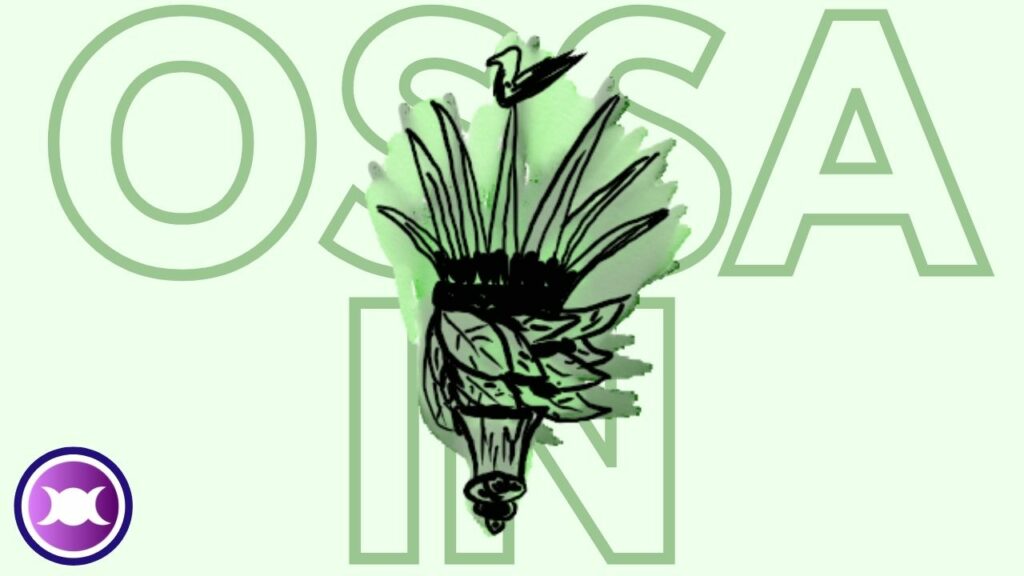
One day, Orunmila ordered Ossain to prepare a huge portion of land because he wanted to start planting and cultivating the soil. In order to do so, Ossain should remove the native plants. However, he refused to perform the task because he identified the plants. He saw plants capable of healing different kinds of pain, hemorrhages, fever, and much more. Orunmila was impressed!
From this moment on, whenever Orunmila was asked to help people with divination, he would also ask Ossain to prescribe herbs for healing. Ossain became known as a doctor!
Ossain started roaming the lands. Wherever he would go, his fame was already there. People would wait for him to heal them. Ossain became so famous that he was asked to heal a king. He did so and the king offered him lots of riches. He refused. He didn’t need them.
After a long travel, he went back to the forests, where he lives until today.
Ossain is calm, emotive, and has lots of intuition.
He wears light green and white clothes.
He’s a healer who rules over the forests.
Orisha Eshu
Orisha Eshu, also known as Esu or Bará is the trickster one and also the most popular Orisha out there. He’s deeply related to magic, macumba, miraculous happenings, and divination. He knows all the occult powers and rules.
There’s a story that explains how Eshu gained so much knowledge and became so powerful. It says that he initially had nothing. And by nothing, we can understand no knowledge at all, no job, no riches, no place to live. Eshu used to roam free with no destination at all.
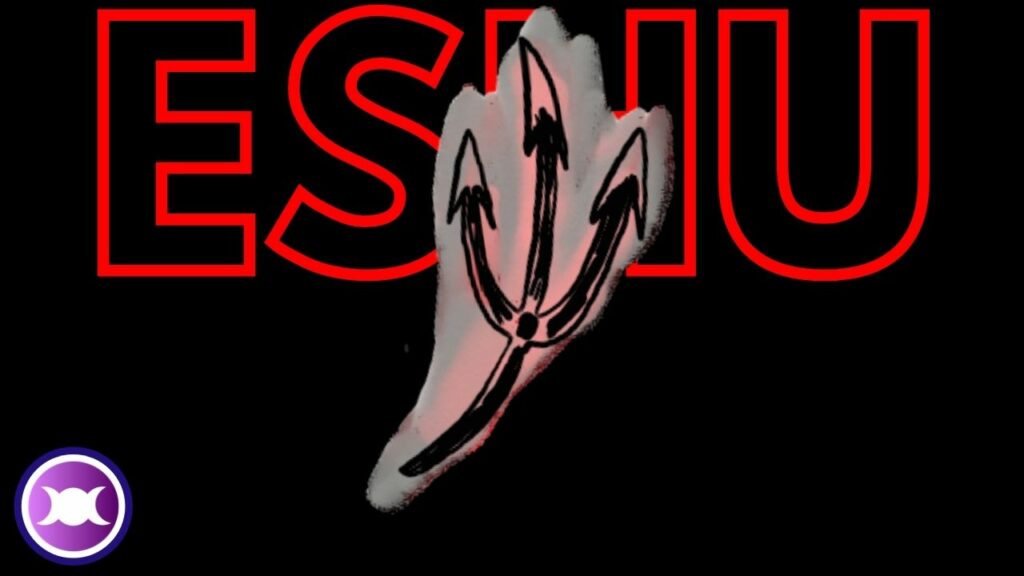
One day he reached Obatala’s house. Many people, including Orisha and humans, used to visit Obatala’s house. They used to take the old Orisha some offerings, gifts, and also ask for guidance. However, everyone would visit him, stay a few days, and go back home.
Eshu did it differently. He stayed at Obatala’s for 16 years! He never asked a single question. He just observed how Obatala used to work, how he used to create humans from clay. Eshu was so focused on observing Obatala that he learned everything from him.
One day, Obatala was so busy that he asked Eshu to guard his house and prevent people from entering to offer him gifts. Eshu stood at a crossroad and stopped everyone on Obatala’s behalf. From here on, every offering dedicated to Obatala should be delivered at the crossroad to Eshu. Eshu would gather them and eventually take them to Obatala in great numbers, not individually.
Obatala observed how hard Eshu was working and decided to compensate him. From now on, it was decided that everyone who wanted to make an offering to Obatala should also pay tributes to Eshu. And also, everyone who visited Obatala should pay tributes to Eshu when leaving.
This way, Eshu not only became knowledgeable but also rich and prosperous. He got a job, a house, and everything he wished for.
Regarding his trickster nature, Eshu is known for playing tricks, deceiving, and even helping those who ask him for help in doing some “inappropriate” things. For example, there’s a story in which a king sent a man to trial for making gossip and spreading misinformation inside the kingdom. This man proposed a challenge to the king to prove he was no lier. The challenge, however, WAS a lie itself. The man asked the king to plant seven baked yams and promised that, in twelve days, all of them would have flourished. He also demanded that these seven backed yams should be planted in front of everyone.
After receiving an ebó (food offering), Eshu helped the man by deceiving the king’s guards. He made some oxen appear on the roofs of cattle sheds. When they were all amazed by the situation, the man exchanged the baked yams for proper yams. The plantation was a success!
Eshu is intrusive and sometimes aggressive.
His element is fire and he wears black and red clothes.
Orisha Omulu
Orisha Omulu, also known as Obaluaê or Sopona is the healer, but also the one who spreads diseases. He’s related to death and also to magic.
Omulu is one of Nanã Buruke’s sons. It is said she had some children, but two of them symbolize opposite aspects of life. Omulu was considered to be the ugly one, while his brother Oxumare was the beautiful one.
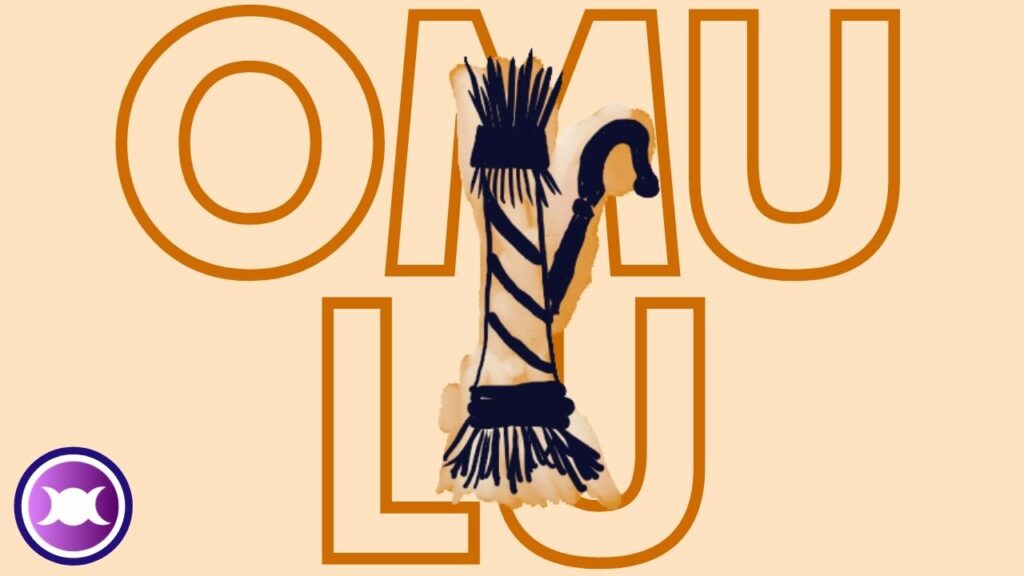
There are different stories to explain how Omulu got his clothes that cover all his body and face, but one of the most common is that Nana felt so sorry for him that she decided to cover it all to avoid him suffering. Besides his apparent ugliness, Omulu also had many skin diseases, including smallpox – which contributed to his ugly appearance.
Anyway, Orisha Omulu used to be a quiet one. He was always alone, living alone… in one specific party, all the Orishas were together. He decided to stay alone in a corner, sitting down. The others were dancing and drinking a lot. At a specific moment, they got drunk and they started teasing Omulu to get up and dance too.
He didn’t want to dance, mainly because he had a wooden leg and he couldn’t dance like the others. They teased him so much, that he stood up and danced a bit. This was not enough, he continued to be teased and provoked. Suddenly, one of the Orishas stumbled upon him and he fell on the floor, exposing his wooden leg.
All the others laughed at him. And, of course, he got mad. He stood up using his walking stick and touched each one with it. All the touched ones became severely sick! The party was over.
Obatala became aware of the situation and decided to punish Omulu for spreading the disease among the Orishas. (Sincerely, I would have done the same!)
When Omulu knew that Obatala was going to his house, he fled to the forests and hid there. Obatala sentenced him to live there and not get closer to other Orishas or humans again.
Orisha Omulu is quiet and vengeful. His element is the earth.
He wears clothes made of straw that cover his whole body and face. Underneath it, it’s said he wears black and red colors.
Orisha Oshumare
Orisha Oshumare is the Orisha related to the rainbow and also to beauty and riches. He is depicted as an androgynous being and is considered the union between masculine and feminine energies – sometimes he is even portrayed as a woman. He is also the creator of rainbows and a rainbow can also be the personification of Oshumare.
It is said that Omulu and Osumare are brothers. Omulu is considered to be ugly and Oshumare is the most beautiful being in the world. However, it was not enough to make him free of problems or curses. For some reason, Oshumare was cursed to live as a shapeshifter. He is a man, he sometimes becomes a woman, and sometimes he becomes a snake.
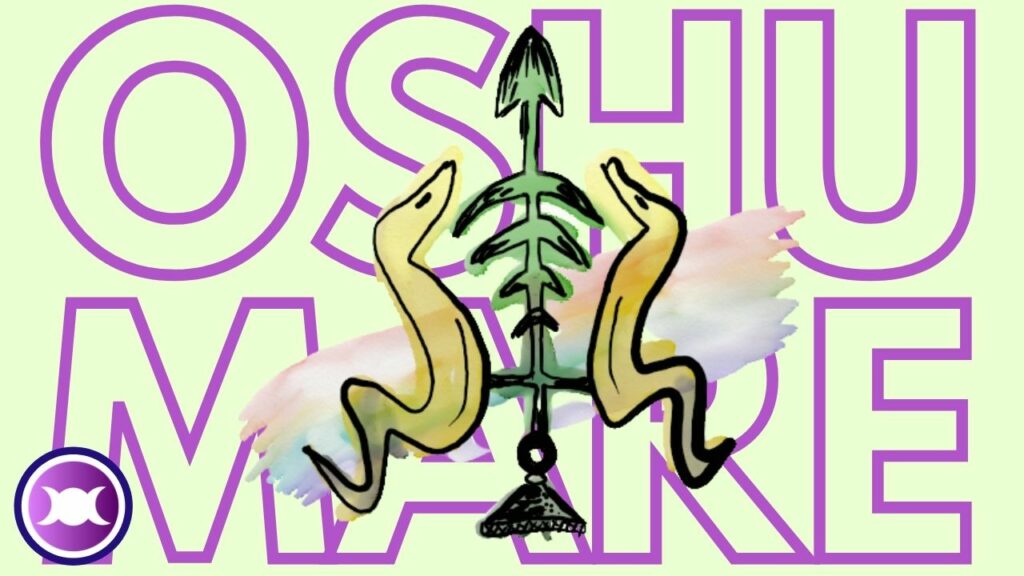
This changing nature made Oshumare a versatile one. He learned how to impress others with his beauty as a woman and also as a man; he also learned how to scare people as a snake or even as a snake-monster being.
One story suggests that Osumare disliked this changing nature because he couldn’t have any stable relationships. Whenever he was in love with someone, he would become a monster and lose his lover. With time, he felt like this was a curse imposed by his mother, Nanã.
Oshumare met Eshu, the trickster Orisha. During the meeting, Esu took the chance to cause some mischief and told Oshumare that Nanã was really guilty for his shapeshifting curse and convinced him to take revenge on her by stealing her crown and becoming the king of the Jeje people.
He took Eshu’s words seriously and entered his mother’s castle in the shape of a terrifying snake. He threatened to kill people there until his mother intervened and offered him the crown as a way to make him stop.
Oshumare becsme a king.
Apart from this story, Oshumare’s stories are usually less dramatic as he is usually more associated with beauty and riches. Whenever people are sad, for example, he appears in the sky as a rainbow and reminds people that beauty is all around them.
Orisha Oshumare is calm and tranquil. His element is water.
He wears light-green and light-blue clothes and he also has the seven colors of the rainbow around him.
Orisha Yemaya
Orisha Yemaya, also known as Yemanja or Janaina, is one of the most popular Orisha of all. She is considered to be the mother of everything and she is associated with the seas. She protects women, children, and fishermen. Although she is mostly related to the sea and the salty waters, she is also worshiped by people who live far from the oceans.
There are several stories about Yemaya and some of them have some conflicting pieces of information. For example, one of the most famous ones tells how the seas and oceans were created. In this story, we have Obatala (the Sky) and Odudua (the primordial earth) – this is a similar motif found in many other mythologies such as the story of Gaia and Uranos in Greek Mythology and Nut and Geb and Egyptian Mythology. Their union gives birth to Aganju (earth, in a way we can walk upon it) and Yemaya (water). Aganju and Yemaya have a child called Orungã.
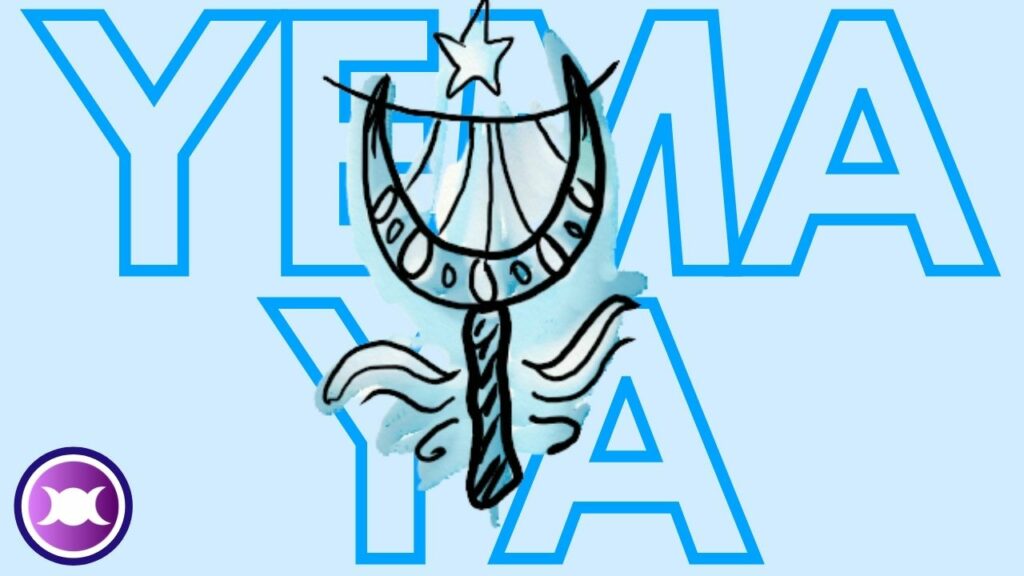
One day, Orungã waited for his father to be absent and raped Yemaya. After this, she fled to the top of a mountain, but he followed her. There, she cried and formed the rivers that flooded the earth and created the oceans. Before Orungã could find her, she died and her body created mountains, valleys, and all the ways water could flow to flood the vast land.
From her death, many Orisha children were born (now comes the conflicting information):
- Shango, the Orisha of Thunder;
- Ogun, the Warrior Orisha;
- Oya (Iansa), the Orisha of River Niger;
- Oshun, the Orisha of River Oshun;
- Obá, the Orisha of River Obá;
- Ochossi, the Hunter Orisha;
- Omulu, the Orisha of Smallpox;
- Dada, the Orisha of vegetables;
- Olokun, the Orisha of deepsea;
- Olossa, the Orisha of lakes;
- Oko; the Orisha of farming;
- Oke; the Orisha of mountains;
- Aje Shaluga. the Orisha of health;
- Orum, the sun;
- Oshu, the moon.
I said there is conflicting information because there are several stories that suggest Yemaya, Oshun, and Oya are sisters too. Others suggest that Omulu is a son of Nanã, who rejected him for his ugliness and disposed of him. Yemaya found, healed, and adopted him.
Orisha Yemaya wears white and blue dresses. She usually holds a mirror in one hand.
She’s calm and tranquil.
Orisha Oshun
Orisha Oshun, also known as Osun, is the Orisha of Rivers and Love. She’s also associated with riches, pregnancy, and fertility. Yemaya is her mother (in some accounts they are sisters). Oshun is also considered a Mother Goddess and it’s very common for her worshipers to be known as “children of Oshun”.
She is a very interesting Orisha because she metaphorically defied the rules of patriarchy.
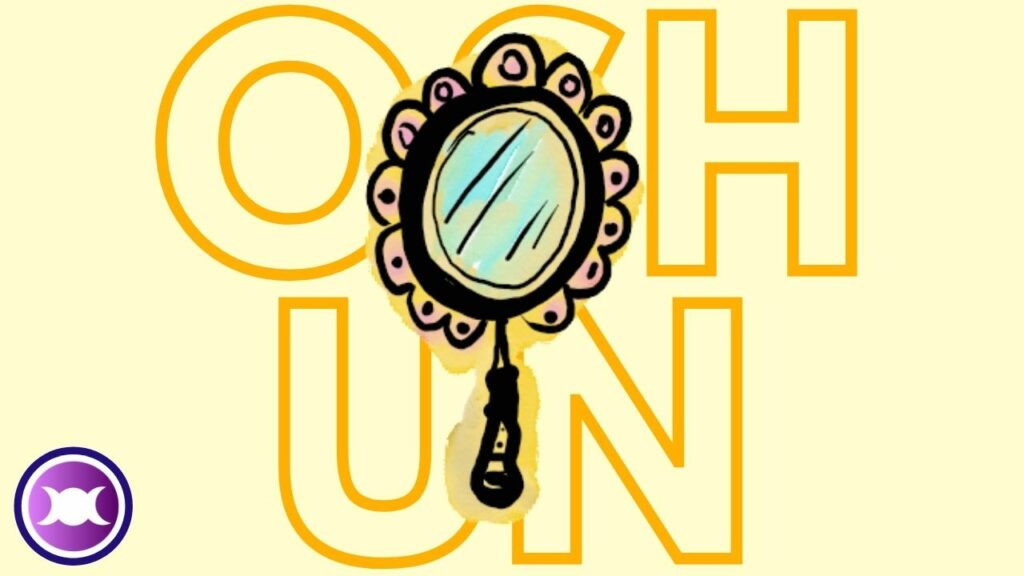
One day she simply decided she wanted to learn the art of divination using Búzios (the divination tool I mention at the beginning of this article), but this art could not be taught to her. Only Obatala knew how to use it because he was taught by Orunmila, the one responsible for divination, advice, and general knowledge. People who can play Buzios are actually asking the Orishas for answers. Humans themselves don’t have the power or knowledge to play alone.
Anyway, Oshun wanted to learn at all costs, but Obatala always said no to her.
One day, Obatala decided to bathe in a river. He took his clothes off and hang them on a tree. While he was bathing, Eshu, the trickster, appeared and saw the situation. Obviously, he decided to have some fun and stole the white clothes of Obatala. He then shouted: “Is the king a king even when he wears no clothes?”.
Obatala noticed Eshu but I was too late. He ran off with the clothes and left Obatala naked.
Oshun, who was passing by, found a naked and ashamed Obatala by the river. She asked what had happened and he told her how Eshu had tricked him. She proposed a deal: she would retrieve Obatala’s white clothes and, in exchange, he would eventually teach her how to use Búzios for divination.
Obatala felt reluctant but eventually agreed with her. Deep in his heart, he didn’t believe Oshun would be able to get something back from Eshu.
Oshun went after Eshu and, when she found him, she asked the clothes back. Eshu was not willing to give them back, but the beauty of Oshun was capable of driving any man or woman crazy. She seduced Eshu, slept with him, and took Obatala’s clothes back.
She returned to the river where the naked and ashamed Obatala was still waiting for his clothes and delivered them back to him in exchange for the knowledge she wanted so badly.
Now, Oshun became the first woman able to play the Búzios and to obtain the power of divination!
Orisha Oshun wears golden yellow dresses. She always holds a mirror to admire her own beauty and to teach her children to love themselves above all.
Just like her mother, she’s also calm and tranquil.
Orisha Oya (or Iansã)
Orisha Oya, also commonly known as Iansã, is the Orisha of storms, thunder, and strong winds. She can bring destruction and also prepare the soil for a new beginning. She’s usually considered Yemaya’s sister, but some tales also describe her as Yemaya’s daughter.
Although she controls storms, her main element is fire. Oya is married to Shango, a warrior Orisha who also has fire as an element. Both are fighters who protect their followers.
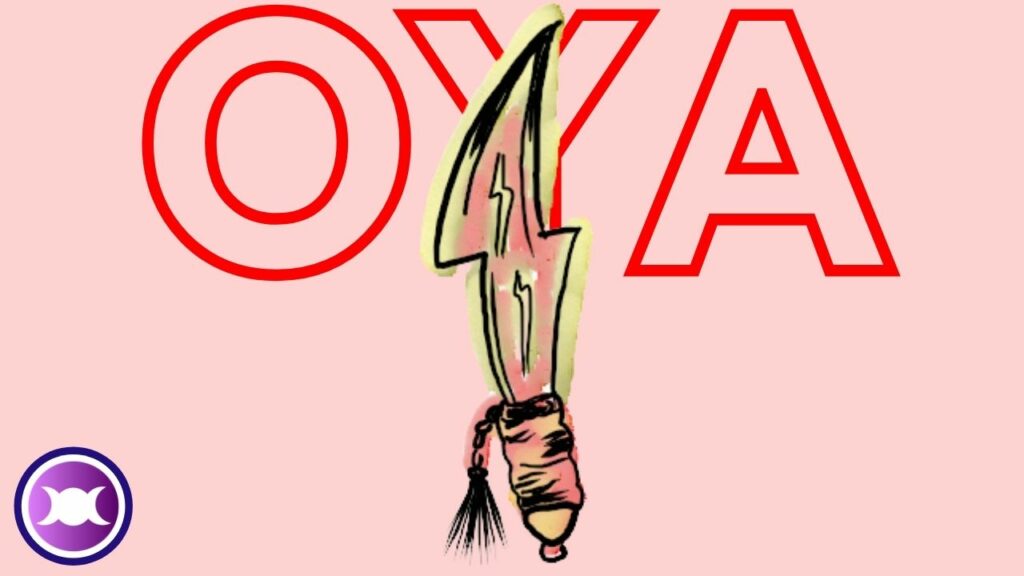
Oya is her main name. Her other name, Iansa or Iansã, means “mother to 9 children”. It is said she couldn’t have any child of her own. One day she asked a Babalawo for some advice and she was told she would have children if he made an ebó (food offering) with lamb. She made it. Soon after, she had 9 children, earning the name Iansã.
Lambs are sacred to her. Firstly because of the ebó she prepared to become a mother. Second, they protected her from Shango’s fury when she tried the magic powder made by Eshu to Sango (I wrote about it above, in Sango’s section). She never ate lamb after these occasions.
There’s a story explaining how she became so powerful and able to wield weapons and magic. It says she wanted to become powerful and stronger than men. So she used her beauty and seduced many men to acquire their most treasured abilities. Smart! Some of the most important skills were obtained like this:
- From Ogun, she learned how to wield the sword;
- From Oxaguia, she learned how to wield the shield;
- From Eshu, she learned how to use the magical power of fire;
- From Ochossi, she learned how to hunt;
- From Logum Edé, she learned how to fish;
- From Shango, she learned the power of make justice and how to use thunderbols;
- From Omulu, however, she wasn’t able to learn anything as she couldn’t seduce him.
She even enhanced the magical power she learned from Eshu and became able to transform herself into a water buffalo. She uses this transformation to attack those who threaten her children and the ones she protects.
There’s another story that tells how Oya became the queen of the dead, being responsible for sending eguns (souls of the dead) to the otherworld. It says the Orisha threw a party and Omulu went wearing his traditional straw clothes. No one wanted to dance with him – as usual. Oya, however, started to dance with him. She caused strong winds that lifted Omulu’s clothes, revealing his appearance.
Everyone got surprised because he was looking handsome. Omulu got happy! So happy that he decided to share the realm of the dead with her. She became Oya Ibale, the queen of the dead. With her dance, she causes winds and shakes the iruquerê, her baton with buffalo (or horse) tail capable of sending eguns away.
Oya wears a red dress and holds a sword in one of her hands. She also holds a buffalo (or horse) tail in the other hand symbolizing her power to tame the forces of nature and send eguns and bad energies away.
She’s impulsive, aggressive, and can’t be controlled. Just like a storm.
Her element is fire and she wears red clothes.
Orisha Nana Buruku
Orisha Nana Buruku, also known as Nana Buruque or simply as Nanã, is the most respected Orisha of all. She’s a crone who knows all the secret spells and hidden knowledge out there. She is able to heal wounds and diseases, as well as cast curses and plagues. She’s also the wife of Obatala, the Creator.
She lives on the riverbed. Actually, she lives wherever earth meets water and forms mud. She was the one who gave mud to Obatala when he was creating humans. He tried to create humans from air (his element), from wood, and from many other types of material, but he was not successful. When she offered mud, he was finally able to create perfect human beings. However, a deal was made. When humans die, they must return to her dwelling and become mud again.
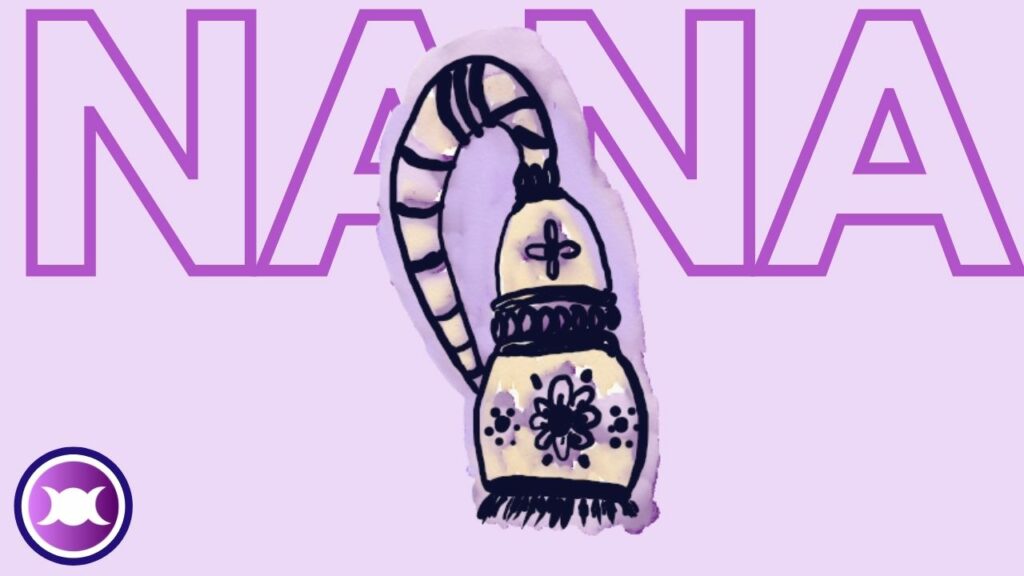
There’s a story stating about how Nana forbade her children and followers from using knives and metals in general during rituals and ceremonies. All metals and weapons belong to Ogun, the blacksmith Orisha. In a sense, all offerings and rituals were made using these metals, so all of them needed Ogun’s permission to be carried on.
Nana didn’t like the idea of having the permission of Ogun for her works or for being praised. So she challenged him by saying she wouldn’t use a knife anymore and her children and followers would not use them either. Ogun’s permission would not be requested to make offerings to Nana.
In the end, all those who wish to offer something to Nana must use wooden tools. Never metal ones! Even knives must be made of wood. This way, offerings to Nana go directly to her.
Orisha Nana wears purple dresses. White is also a color that represents her. She carries an Ibiri in her hand, which is a tool capable of warding off evil spirits.
She is mysterious and can be vengeful.
Conclusion
So these are the 12 most powerful and important Orishas, Gods from Yoruba Mythology and religions derived from this amazing culture. I hope you could get a clearer picture of them and now you’re able to familiarise yourself with these forces.
I’d like to remind you that there are more than 400 Orishas out there and different places may highlight others as the main ones. These 12 are the most worshipped in afro-descendant religions such as Umbanda and Candomble in Brazil and they are also popular in Africa as well in Cuban Santeria.
If you enjoyed this article, please share it with people who may also find it interesting.
Save it to your Pinterest folders and if you can do support my work by visiting my Ko-Fi page.
Thanks for reading.
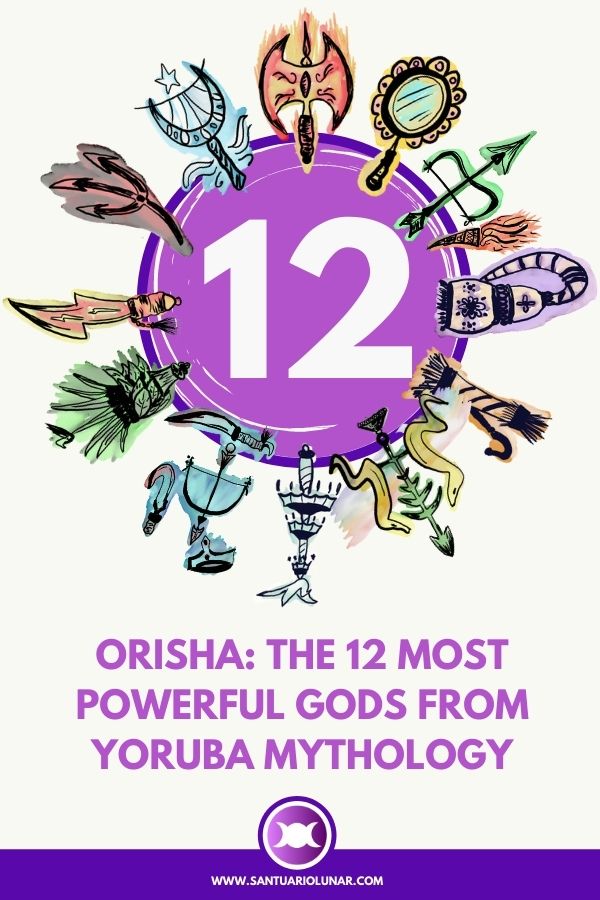
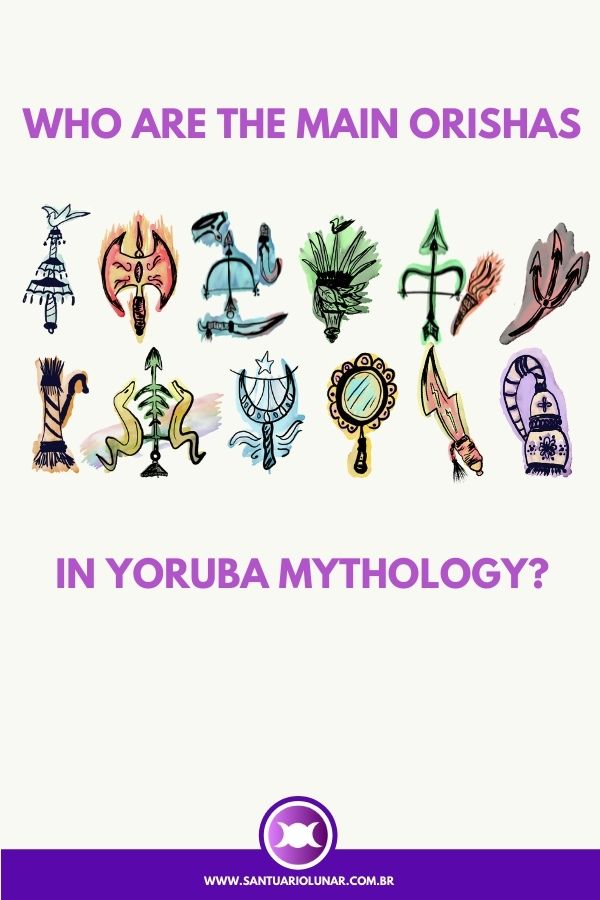
General FAQ
How many Orishas are there?
There are more than 400 Orishas out there. Each region has their own main Orishas and stories may also vary.
Where is Yoruba located?
The Yoruba people thrived in the region of Nigeria, Benin, and Togo in West Africa. Today it’s known as Yorubaland.
Where is Yoruba religion Practiced?
In the region known as Yorubaland (today Nigeria, Benin, and Togo) and variations are found across the globe. The main ones are Umbanda and Candomble (Brazil), Santeria (Cuba), and Vodou (Haiti).
Which Orisha created the world?
Olorun was responsible for having the idea of creating firm land. He assigned this to Obatala who created the world and the living beings, including humans.

